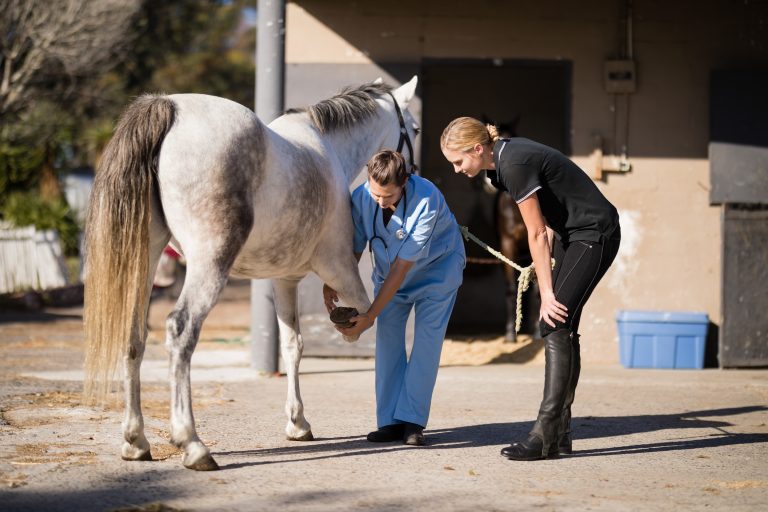
In this episode of the Disease Du Jour podcast, we spoke about kissing spines in equines with José M. García-López VMD, DACVS, DACVSMR. He is an Associate Professor of Large Animal Surgery at the University of Pennsylvania School of Veterinary Medicine, Department of Clinical Studies at New Bolton Center.
García-López said some of the initial signs that might lead a veterinarian to look at the possibility of kissing spines would include a horse suddenly resistant to saddling or being ridden. The horse might seem “sour” or not willing to take the correct lead. It might buck or even become violent.
“In the English sports it can be more subtle,” he said. The horse might be “tight across the back,” lack impulsion, not perform up to previous levels or have subtle attitude changes. However, he warned that even with these horses, kissing spines can cause them to become unrideable because of changes in behavior. “As soon as a saddle is close by, the horse will change and be resistant,” he said.
Tips for Diagnosing Kissing Spines
García-López made a specific point to tell veterinarians that radiographic changes are not necessarily clinical. “[Radiographic changes] doesn’t mean the horse is suffering from this condition,” he noted.
He said seeing changes on pre-purchase exam radiographs can be challenging. “If you see an abnormality, what do you do?” posed García-López. “Horses, especially Thoroughbreds, often have [radiographic] back changes.”
He said a good history is critical. Don’t let the horse get “pigeonholed” into having an issue with kissing spines just because of radiographs.
“Make sure to note a change in exercise, change in amount of work, change in rider or diet…then do a full lameness and visual evaluation,” García-López said. That includes range of motion and flexion of the back.
“There is evidence that if you use several [diagnostic] modalities together, it will increase your success of identifying kissing spines,” he noted. “Include nuclear scintigraphy. You can increase your accuracy up to about 80%.”
He said work done at Penn and Tufts showed combined modalities for evaluation increases diagnostic accuracy. “If you suspect an area, perform a block in the interspinal spaces,” advised García-López. He said he found those that blocked had a better prognosis.
Other Kissing Spine Information
García-López provided more information on diagnostics, treatments and follow-up for horses diagnosed with kissing spines. He discussed rehabilitation and noted that “surgery is not a shortcut” to healing. García-López recommends a strict rehabilitation program for horses treated for kissing spines.
García-López reminded veterinarians that if there are abnormalities on films, then do more testing. “If there is no scintigraphy, then block the area to confirm,” he advised. “If you only have films, then it won’t be as good for case selection.”
Prognosis for Horses
García-López said based on studies, there is quite a good prognosis for 80-88% of horses that can go back to work after being treated for kissing spines. “Case selection is key,” he said.
He noted that a good number that were competing at a high level might come back to compete at a lower level.
About Dr. García-López
Jose García-López, VMD, is a Diplomate of the American College of Veterinary Surgeons and a Diplomate of the American College of Veterinary Sports Medicine and Rehabilitation. He is an Associate Professor of Large Animal Surgery at the University of Pennsylvania School of Veterinary Medicine, New Bolton Center. He received his veterinary degree from the University of Pennsylvania in 1996. He did a residency in large animal surgery with an equine sports medicine focus at Tufts Cummings-School of Veterinary Medicine (1997 to 2000).
His research interests include
- Development and refinement of orthopedic surgical procedures to improve equine patient outcomes.
- Exploring the use of advanced imaging and orthopedic surgery as a reciprocal tool in order to improve our diagnostic and surgical proficiency when diagnosing and surgically managing equine orthopedic injuries.
- Using of advanced imaging for the diagnosis and treatment of musculoskeletal injuries in equine sports medicine.
García-López said veterinarians may contact him with questions via email at jmgarcia@vet.upenn.edu.








